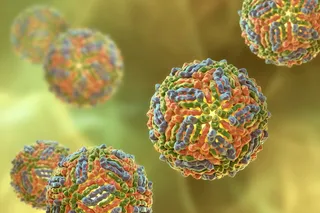Just over a decade ago, researchers announced a first: They had cured a patient of HIV. Known as the Berlin patient, Timothy Ray Brown had needed a bone marrow transplant to treat his acute myeloid leukemia. Doctors used the opportunity to replace his bone marrow using stem cells from a donor with gene-based HIV immunity. It worked: Brown’s leukemia was cured, as was his HIV. More recently, in 2019, a second patient, this time being treated for Hodgkin’s lymphoma, was similarly cured in London.
But although these are the most famous stories where patients have been cured from HIV, their treatments represent just one option of many new approaches for tackling the virus — and one of the least widely applicable. It’s too invasive and too risky to conduct a bone marrow transplant on someone who doesn’t already have cancer that requires the procedure — especially considering most patients with ...














